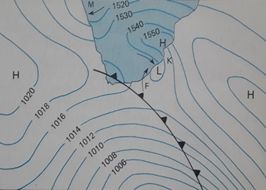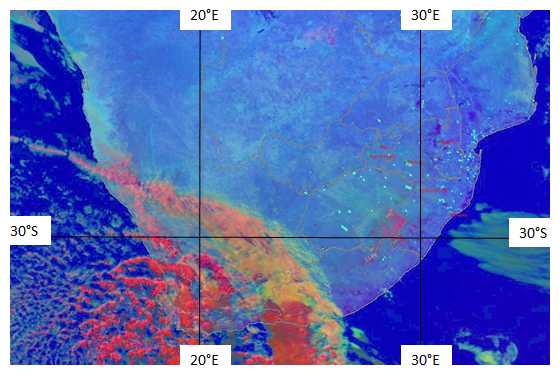Common Remarks
Cold fronts are most common during the winter over South Africa. Cold fronts pass once to twice a week over the southern part of South Africa displacing the surface high pressure systems and their associated stable weather conditions that normally dominate the interior. Most of the frontal depressions are rooted south of 40 degrees south. Due to the fact that the southernmost point of South Africa is located at 35 S the country is not directly affected by the passage of a warm front. The upper air troughs associated with these cold fronts normally occur 5 to 10 degrees of longitude to the west of the surface cold front. On occasions these upper air trough can develop into cut-off lows. For more information on Cut-off lows over South Africa refer to the Cut-off low conceptual model
 |

|
Cold fronts which move over the southern and central parts of South Africa, don't only result in a decrease in surface temperatures and the arrival of precipitation, predominantly along the coastal belt, but dry and windy conditions are possible east of the front, as low level wind speeds increase. This increase in wind speed over the eastern interior of South Africa, which is very dry during the winter months, can result in runaway fires (Veld Fires), as can be seen by the bright pixels on the Day Microphysical satellite image above. The position and strength of the surface high pressure system over the north-eastern interior of South Africa is instrumental to the development of the strong winds ahead of the cold front. These surface winds ahead of the cold front can easily reach 20-30Kt.
I. Appearance in Satellite Data
Learn about how to recognise and detect South African Cold Fronts in satellite images.
II. Meteorological Physical Background
Find out more about the meteorlogical and physical background of South African Cold Fronts
III. Key Parameters
Learn which key parameters to use for montoring South African Cold Fronts
IV. Typical Appearance In Vertical Cross Sections
Find out the typical appearance of Arctic South African Cold Fronts in vertical cross section
V. Weather Events
Explore the weather events associated with South African Cold Fronts
VI. References
Let these comprehensive documents in the references assist you in finding more about South African Cold Fronts